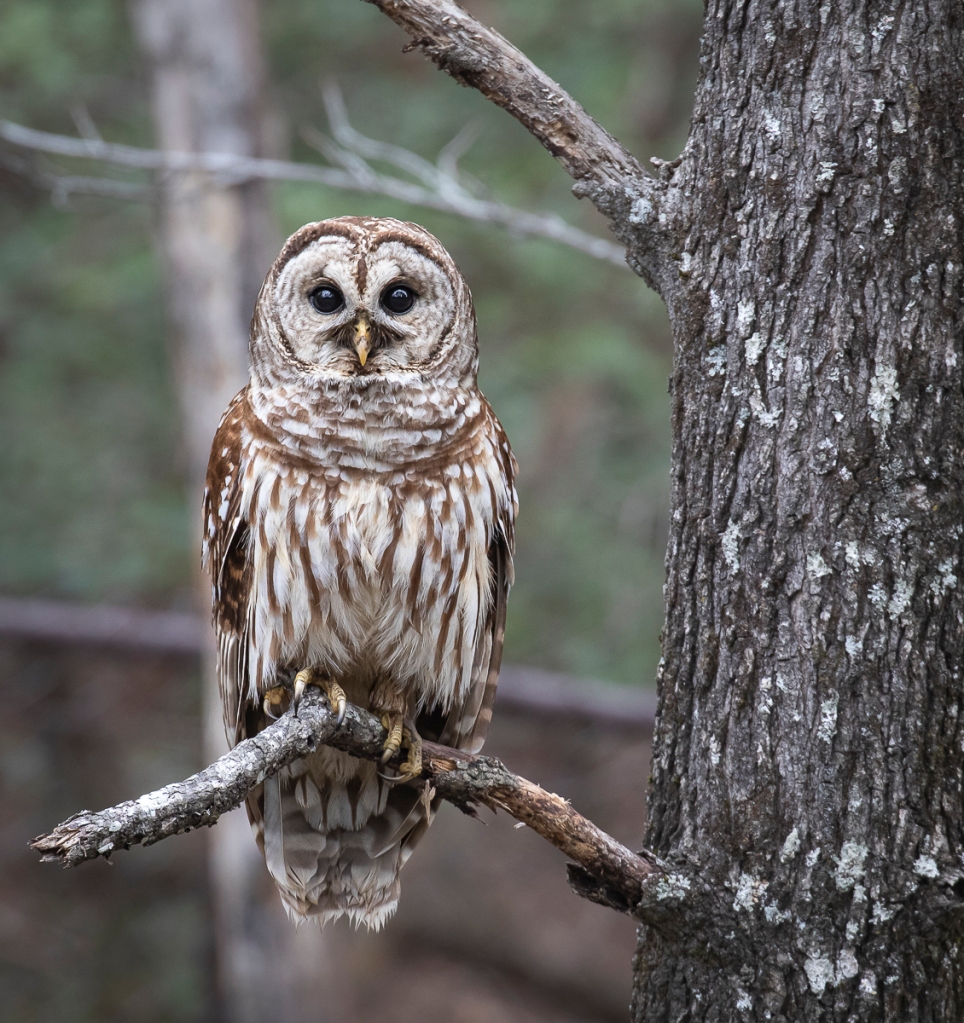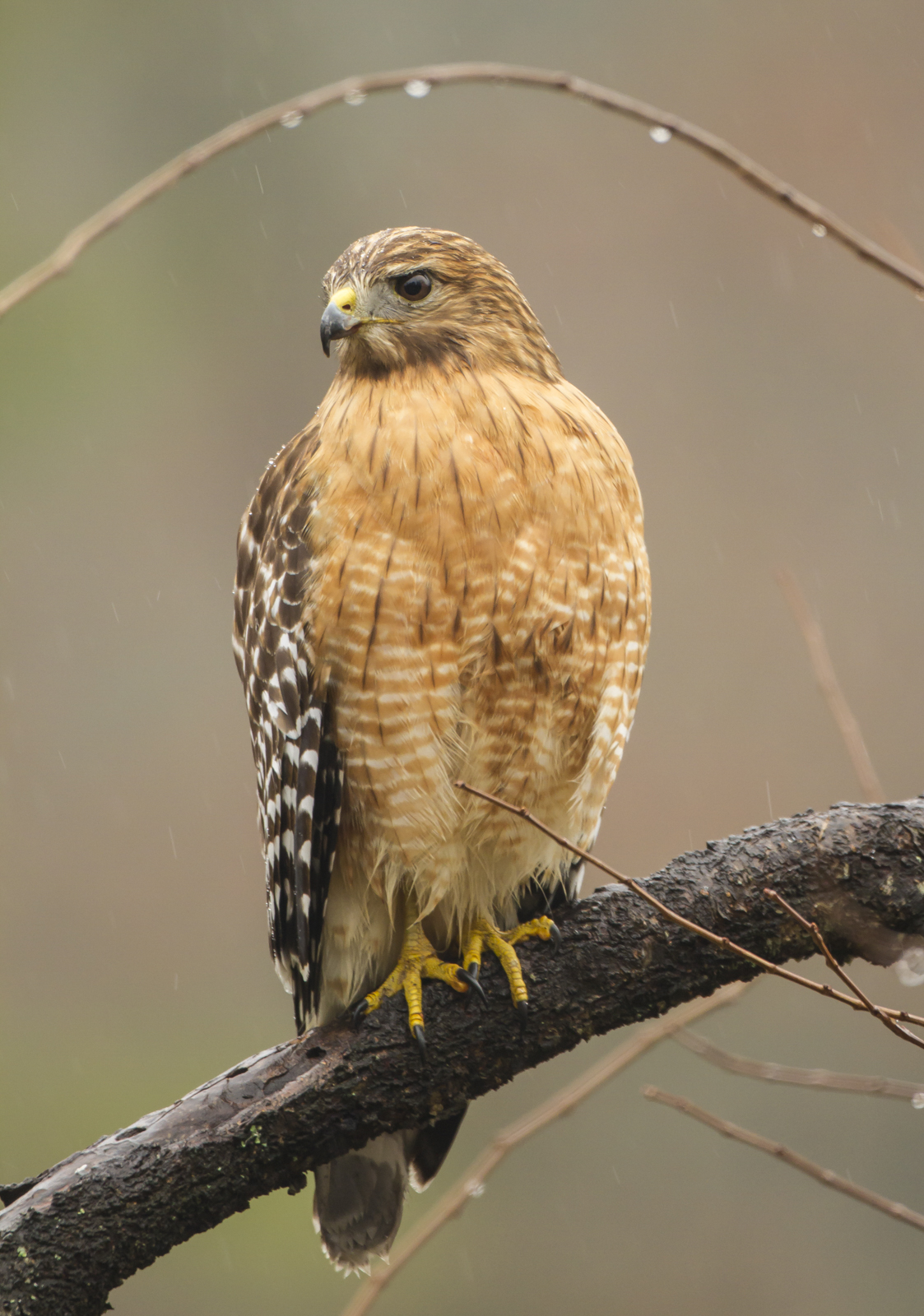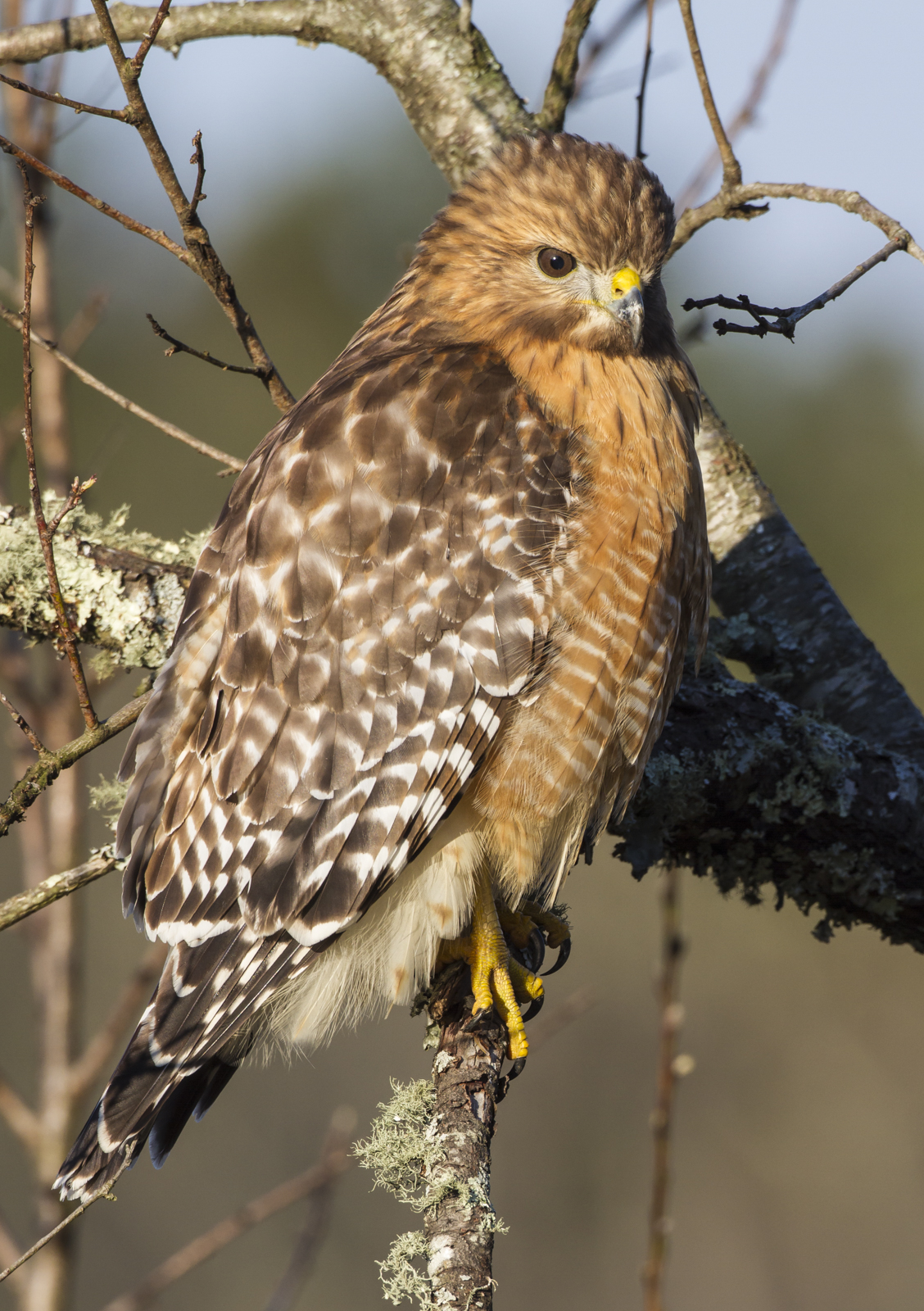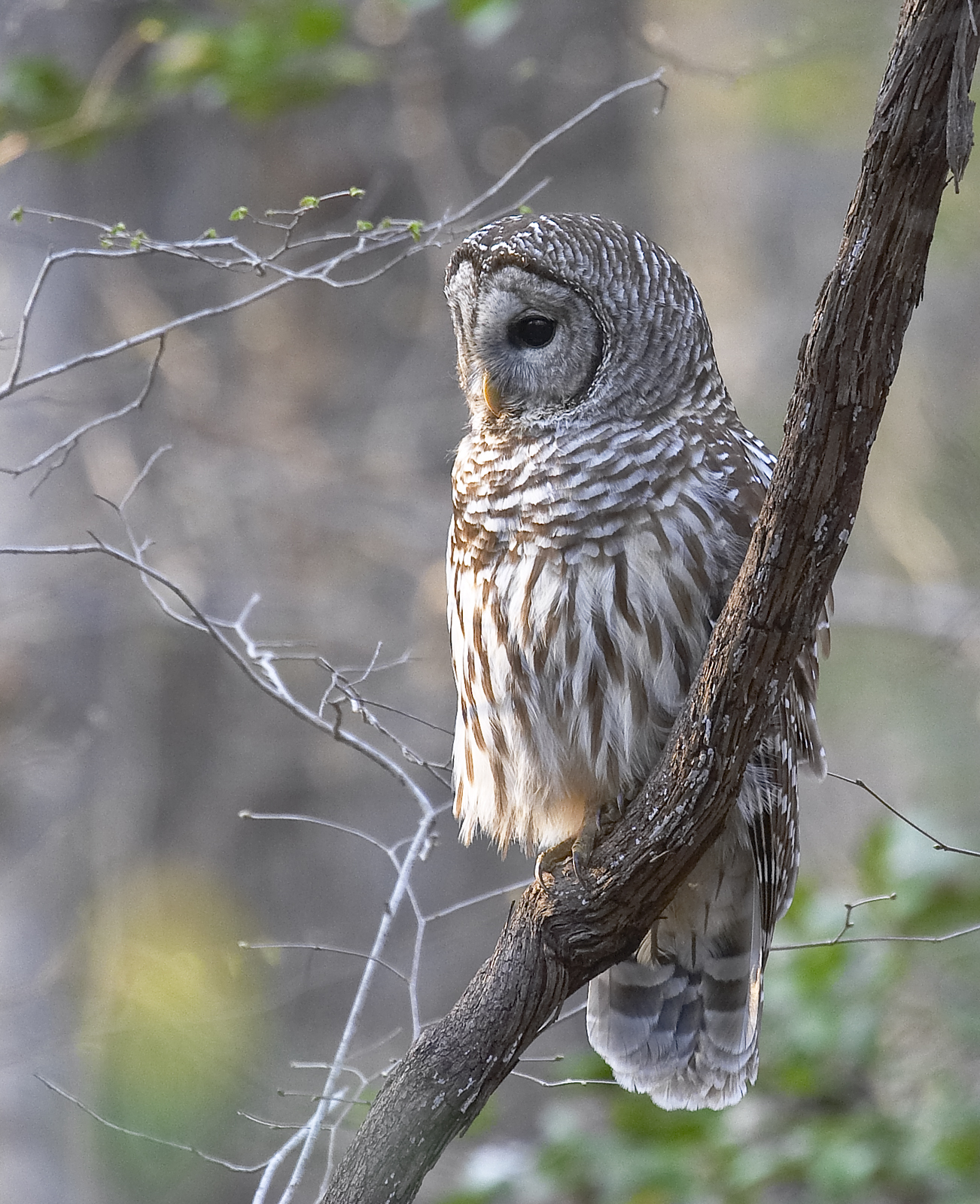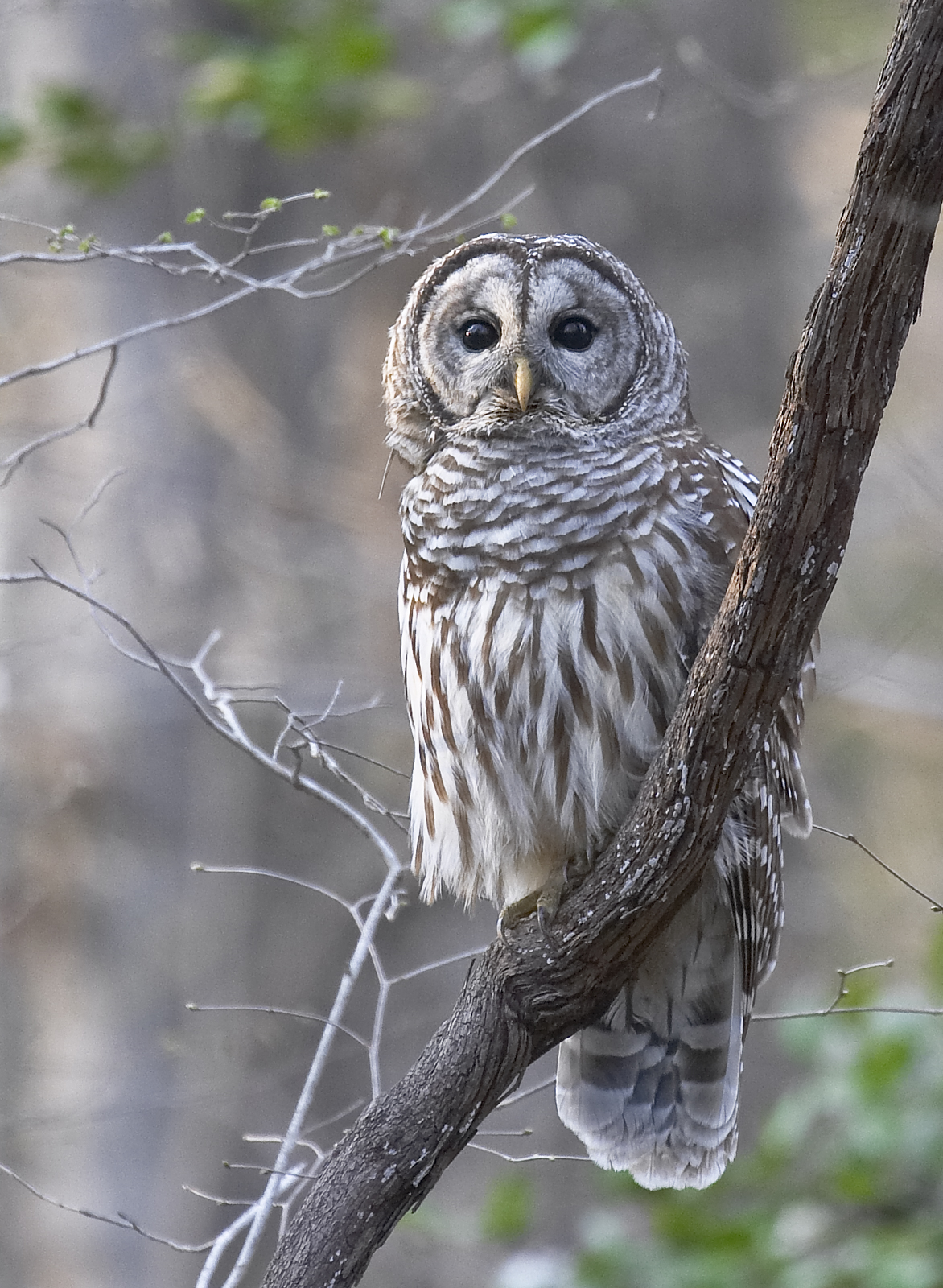I too felt a slumberous influence after watching him half an hour, as he sat thus with his eyes half open, like a cat, winged brother of the cat.
~Henry David Thoreau, on watching an owl
I got a surprise email this week from a friend that had been one of my Yellowstone participants last summer. He told me about a barred owl nest that was on the golf course where he plays. A few years ago, there had been one on the course in the same tree and he was able to photograph the young on the day they left the nest cavity. He even published a children’s book about the owl nest. Some friends had told him they saw an owl going in and out of the nest cavity again this week. After speaking to officials at the club, he got permission to go out early, before tee time, to photograph the nest once again. The club is supportive of promoting bird conservation and awareness and is part of the Audubon Cooperative Sanctuary Program for Golf, an award-winning education and certification program that helps managers enhance the valuable natural areas and wildlife habitats that can be found on many golf courses. My friend knows I am a sucker for wildlife photo opportunities and was kind enough to invite me along.
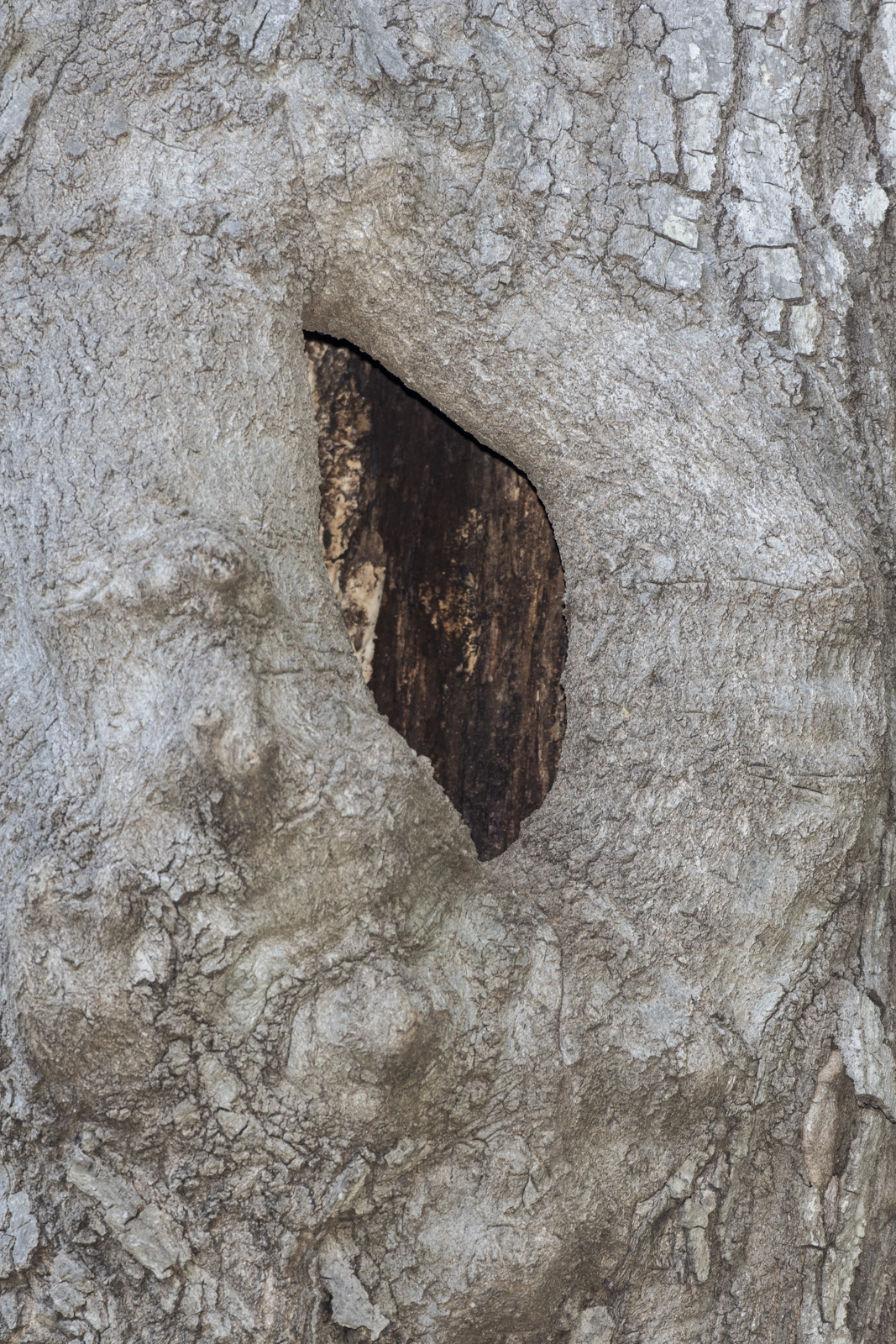
What a barred owl nest cavity looks like about a minute after the owl flies off (click photos to enlarge)
I arrived at the golf course in the predawn light the next morning and we hiked out to the tree. I took my 500mm telephoto, a 1.4X teleconverter, tripod, and flash. I was carrying my gear in a backpack while my friend carried his rig already to go mounted on his tripod. Note to self, that is a better plan. When we arrived at the tree, the owl stared at the two early morning odd-balls and took flight soon after the first photo was taken (I was still assembling my gear onto the tripod, unfortunately). She probably is not used to people standing on the fairway this time of day. She flew across to some trees in a nearby backyard. In a few minutes, the owl let loose with a series of calls, including the monkey-like hooting and squawking I have heard so many times in the past. Shortly afterward, the owl cruised back toward the nest and settled on a branch within sight of the cavity.
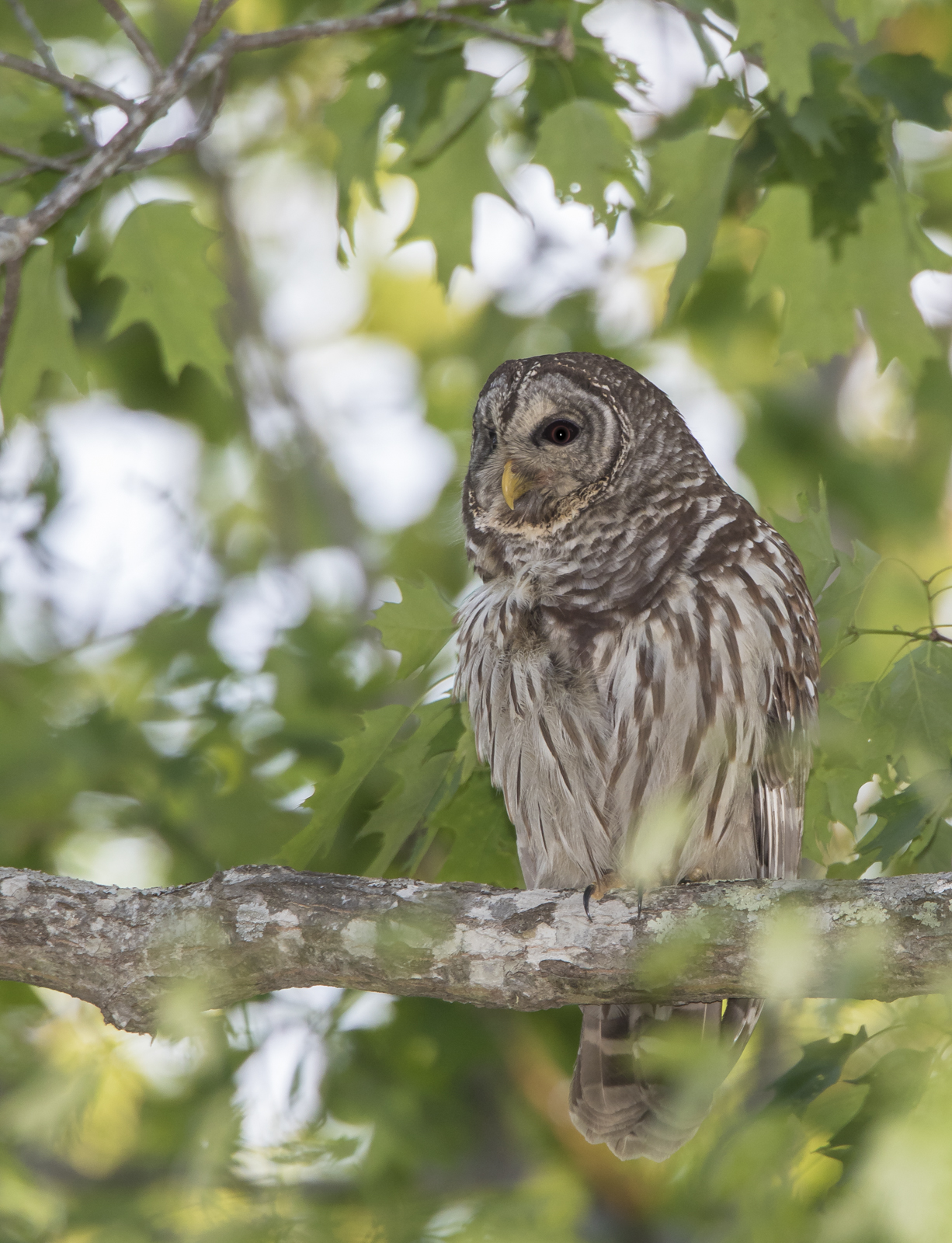
Barred owl watching the nest cavity
Something soon caught her attention – there was a squirrel climbing up the trunk near the nest entrance. The owl sailed across, harassing the squirrel as it tried to run around the trunk and hide. After a quick spin around the trunk, the owl landed back on a large branch, only to dive after the squirrel once again when it resumed its climb up the trunk. This time the squirrel leaped across to another tree and moved far enough away to satisfy the protective parent, and the chase ended.
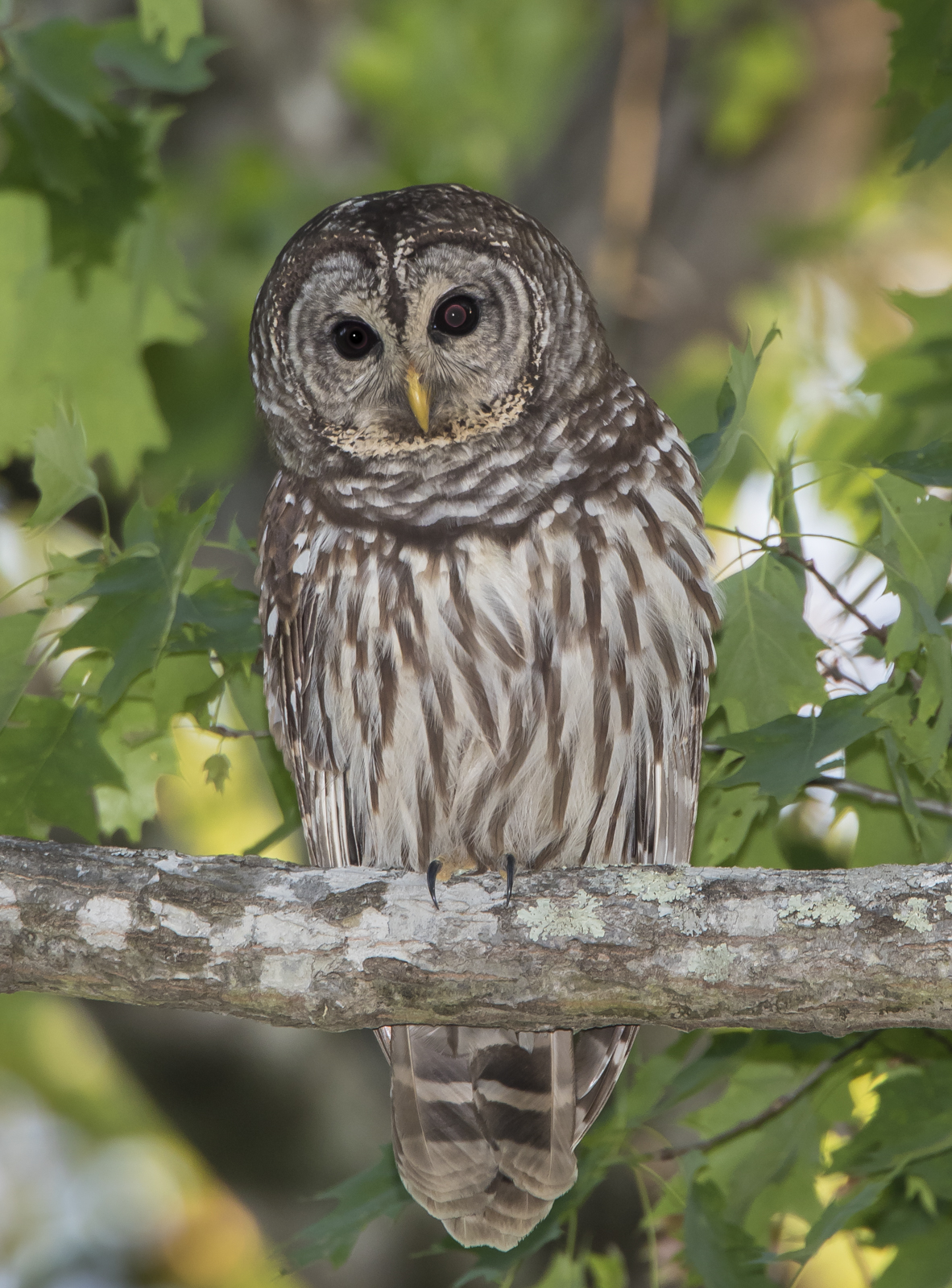
Once the normal activity of the grounds crew commenced, the owl seemed to calm down
A member of the grounds crew showed up near us and started grooming the area and blowing leaves. It seems that the familiar noise and movement of staff helped calm the bird. The owls are undoubtedly accustomed to this daily ritual near their nest and the passage of golfers throughout the day. Maybe we should carry a golf bag next time to ease her concerns.
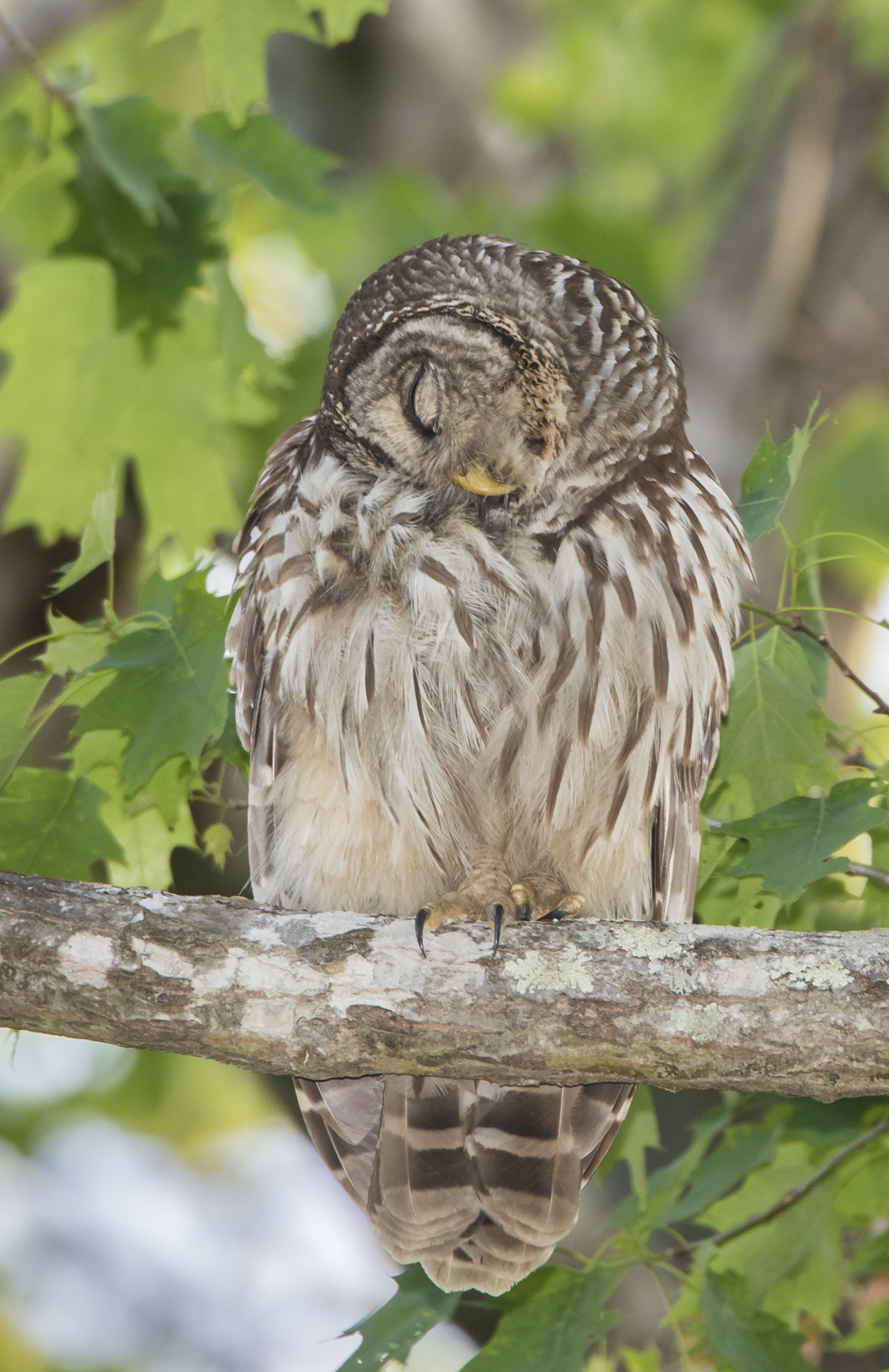
Preening must be relaxing based on this look
After the squirrel chase, it seems that a good preening was in order.
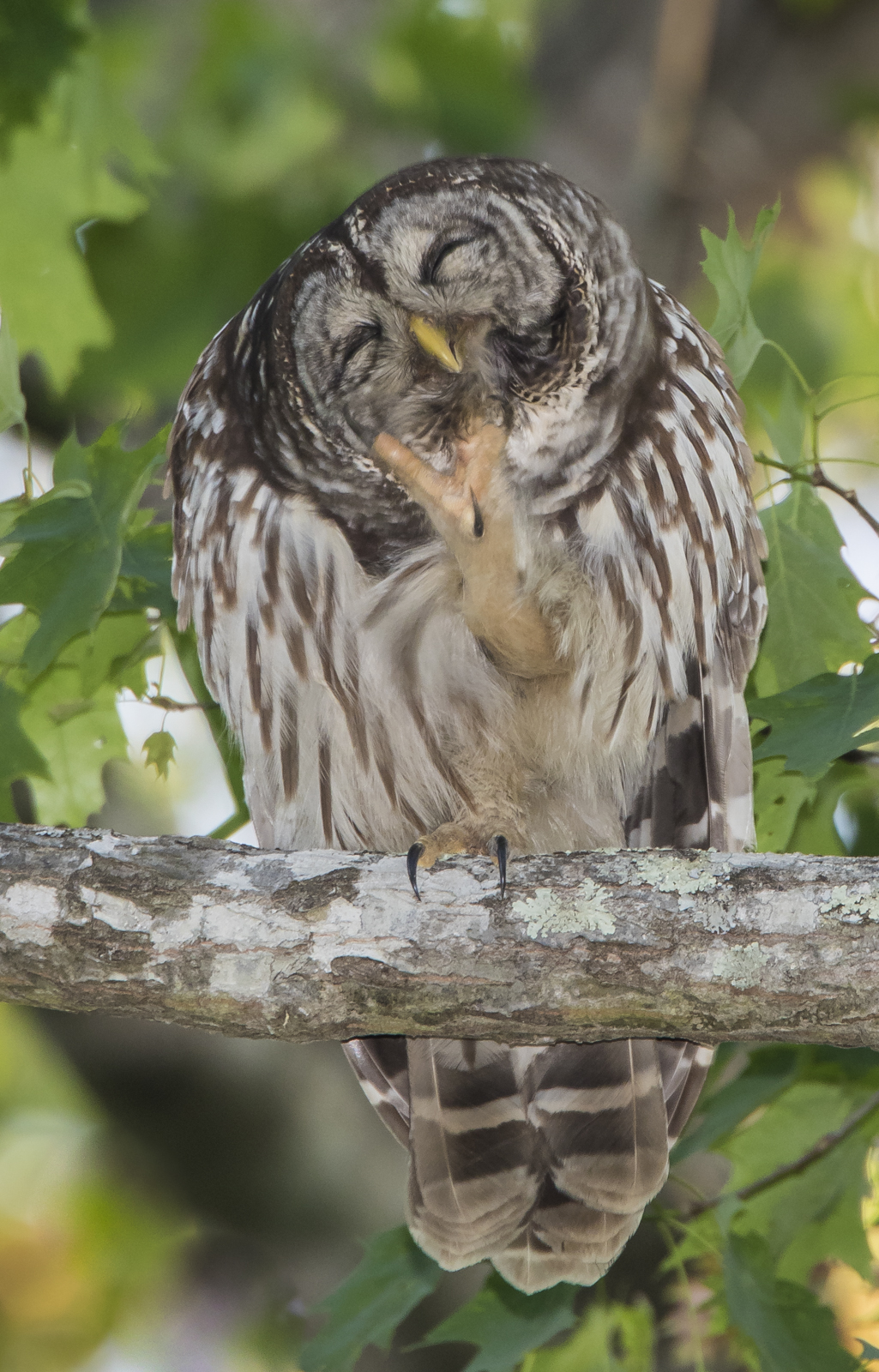
Nothing like a good scratch in the morning
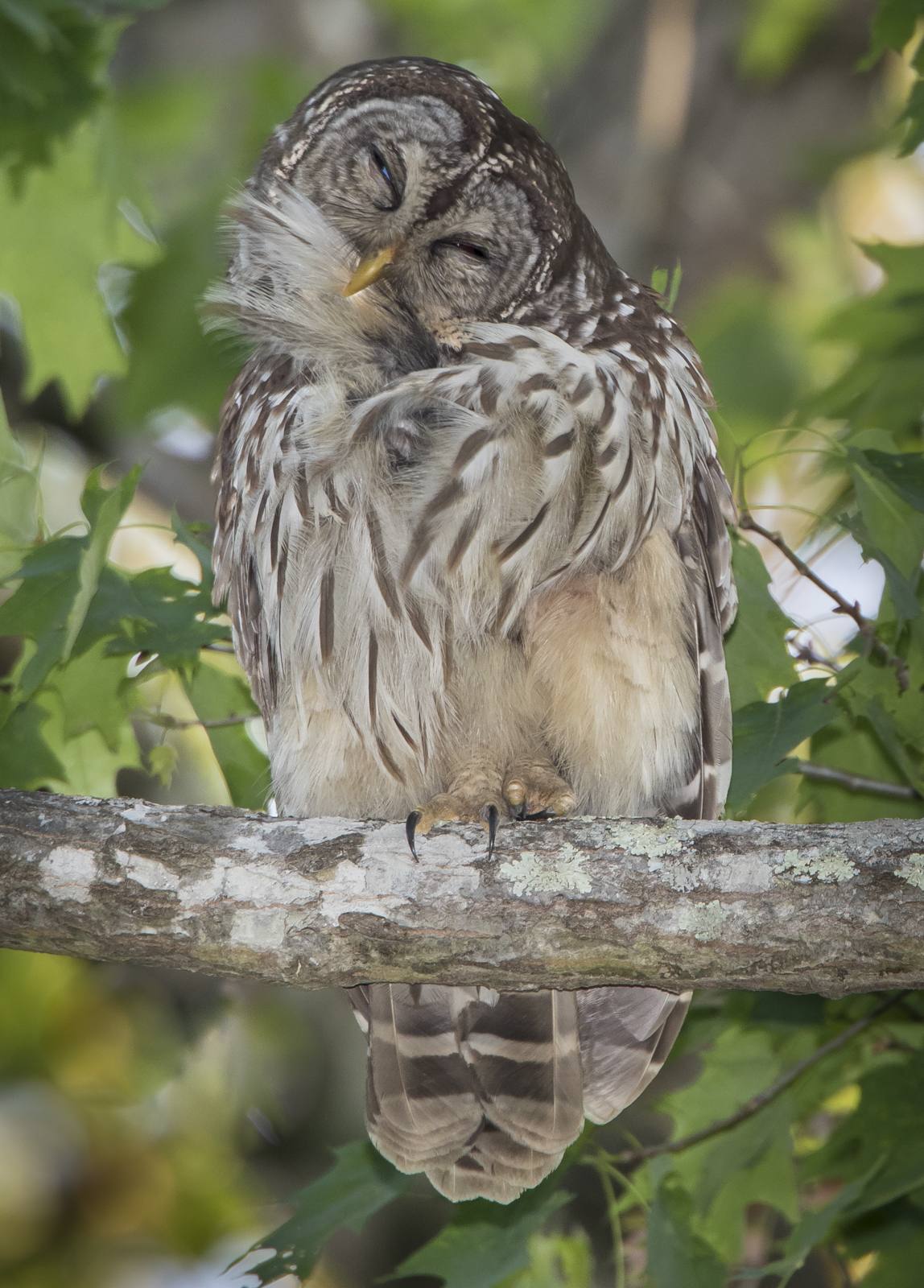
One feather at a time
We watched the owl preen for several minutes. At times, she almost seemed to doze off in the middle of a feather pull. I think Thoreau might be right…the slow, deliberate movements of an owl are reminiscent of a cat lying in a sunny window and surveying its world.
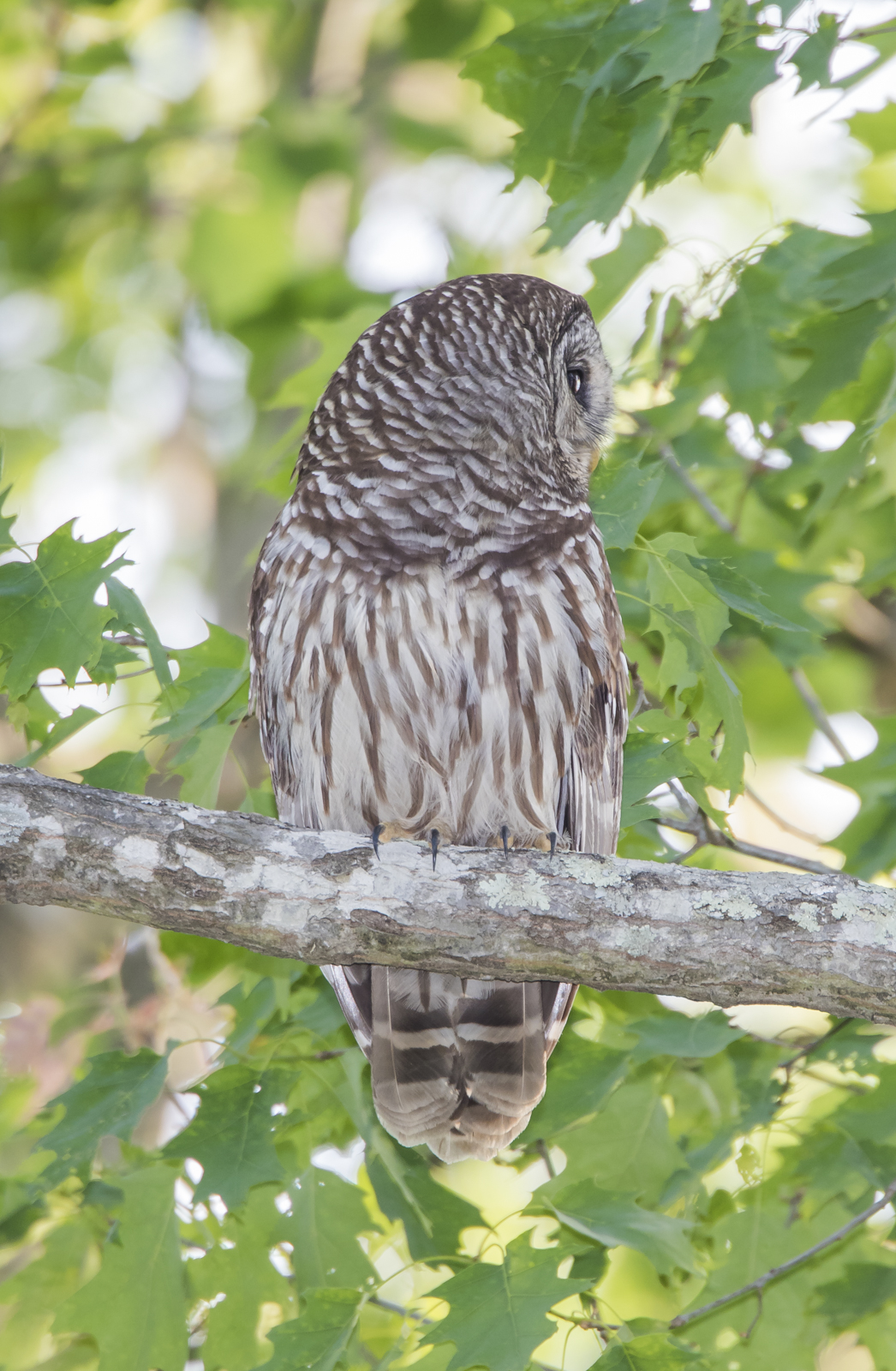
Heard something
After tidying up the feathers, the owl became more alert and was staring off in various directions for long periods of time.
Shortly after this video clip was made, the owl flew down to the fairway, sat for a few seconds, then returned to another branch with a large beetle. She soon took it into the nest cavity to presumably share with the young owls waiting inside. We waited, but the owl did not reappear, and I needed to leave for a meeting later that day at Pocosin Lakes National Wildlife Refuge. What a great way to start a day. Ironically, after the meeting, I was telling another friend about the owl incident and wishing I could find a screech owl in a similar situation. We drove around the refuge for a couple of hours and saw plenty of wildlife (bear, including our first new cub of the year, beaver, deer, etc.). As we made the final loop, I looked down the road and spotted something in one of the wood duck boxes next to the canal….
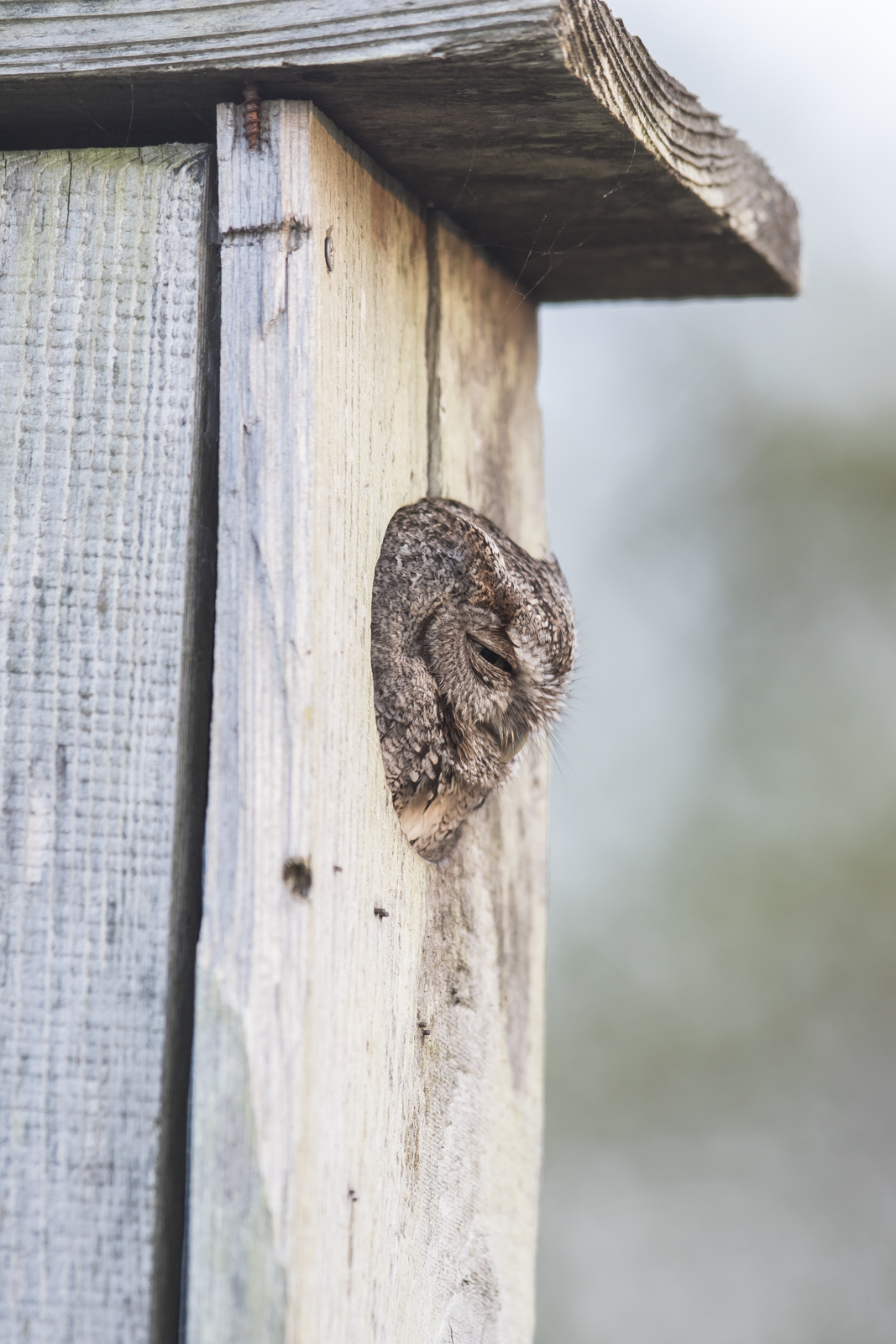
An Eastern screech owl peeking out of a wood duck box
Yep, an Eastern screech owl with its head poking out of the entrance hole. I have seen screech owls in wood duck boxes many times over the years, especially in winter. The usual thing is for them to wait until the car is almost close enough to stop for a photo and then they duck back inside. And this one was on the passenger side of the vehicle, so I had no chance at a photo. By the way, this proves that I don’t always have the wildlife on my side of the car as some have suggested:) As I pulled up, my friend got some great shots.
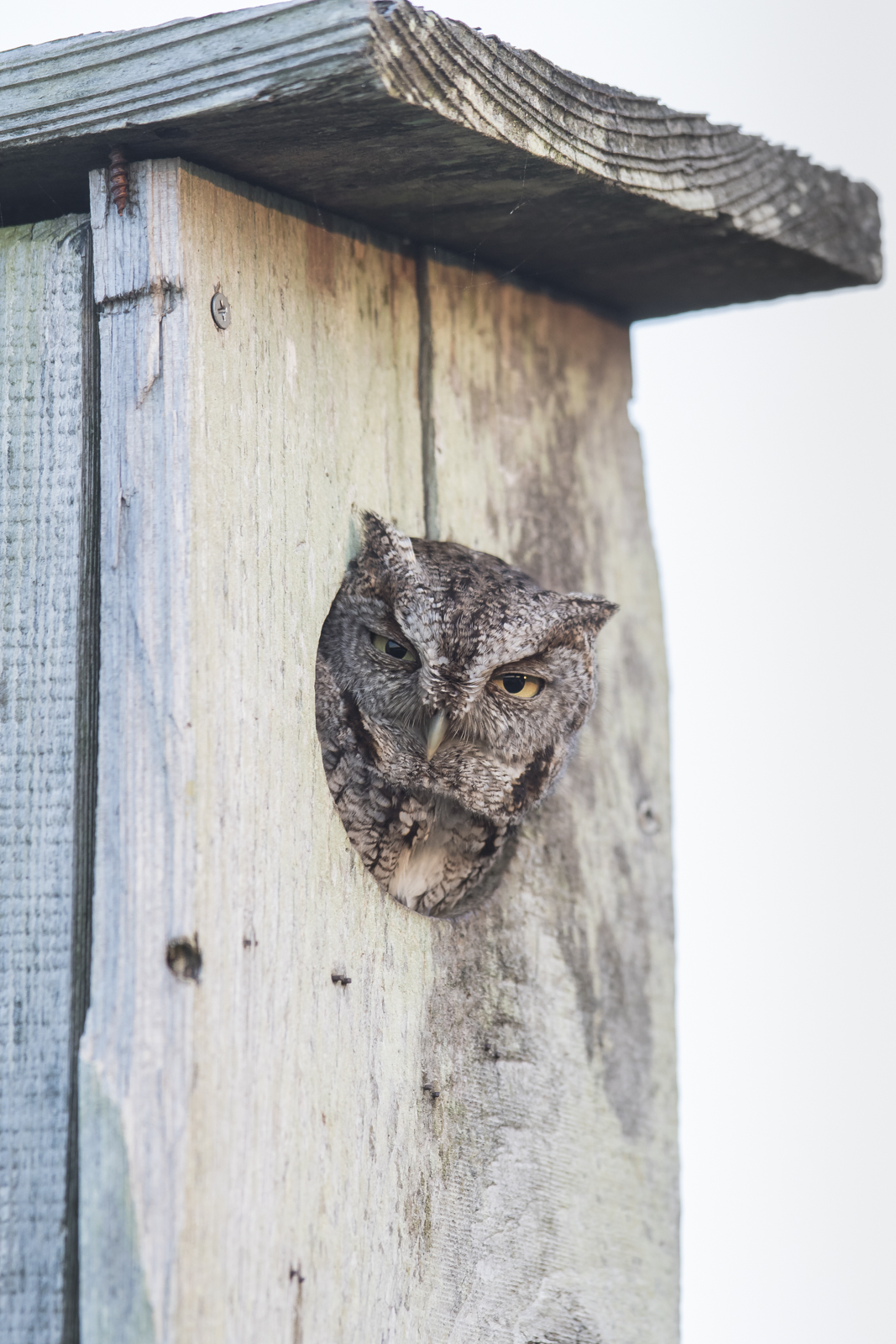
Checking me out as I eased the car forward
We decided to go down the road, turn around and see if I could get a few photos out my side of the car, although I fully expected the owl to disappear back into the box as soon as I pulled up. Well, it surprised me, and even turned and gave me a once over with a rather sleepy look on its face.
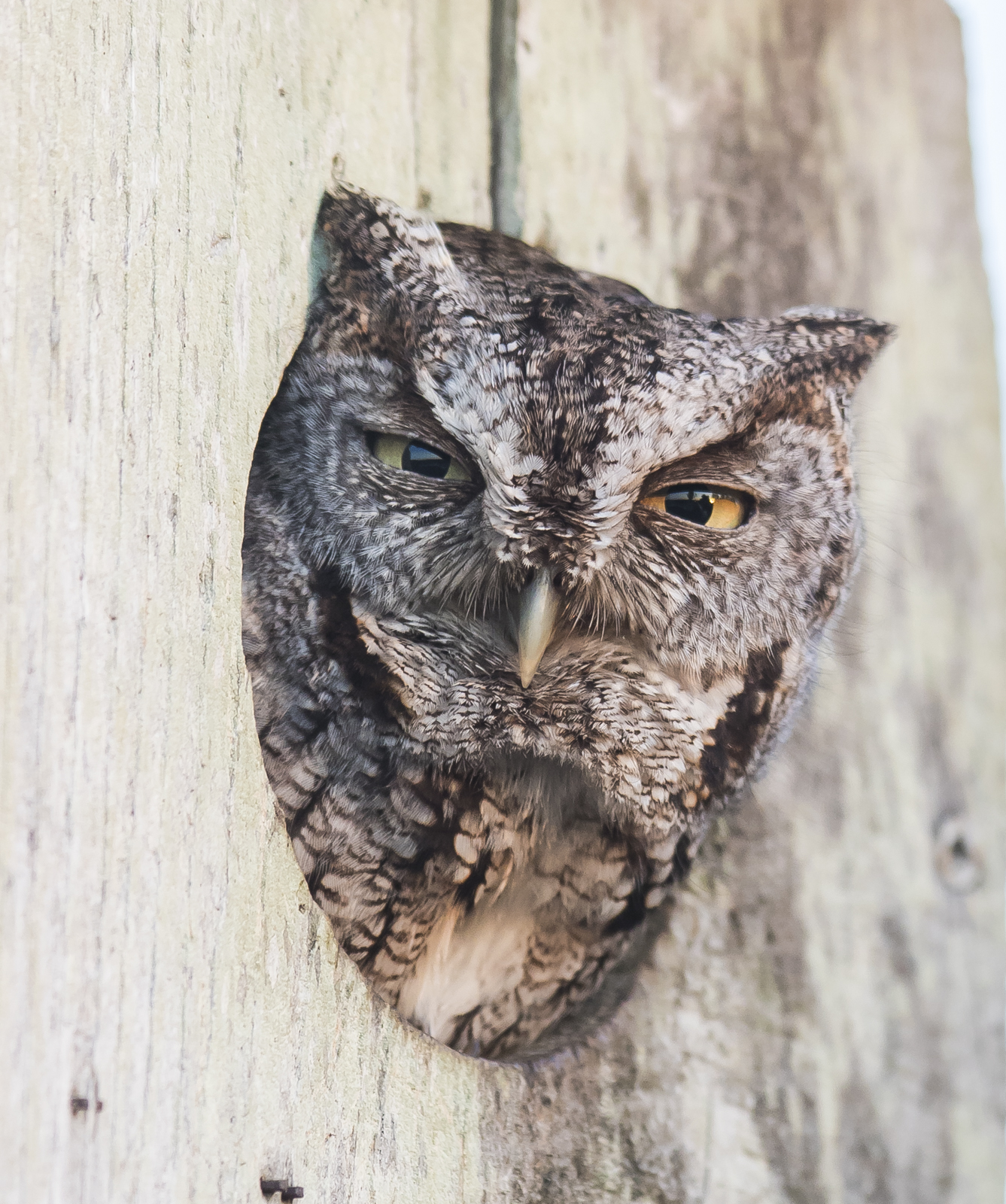
What a face
It finally turned, and pulled back in, and we drove on.
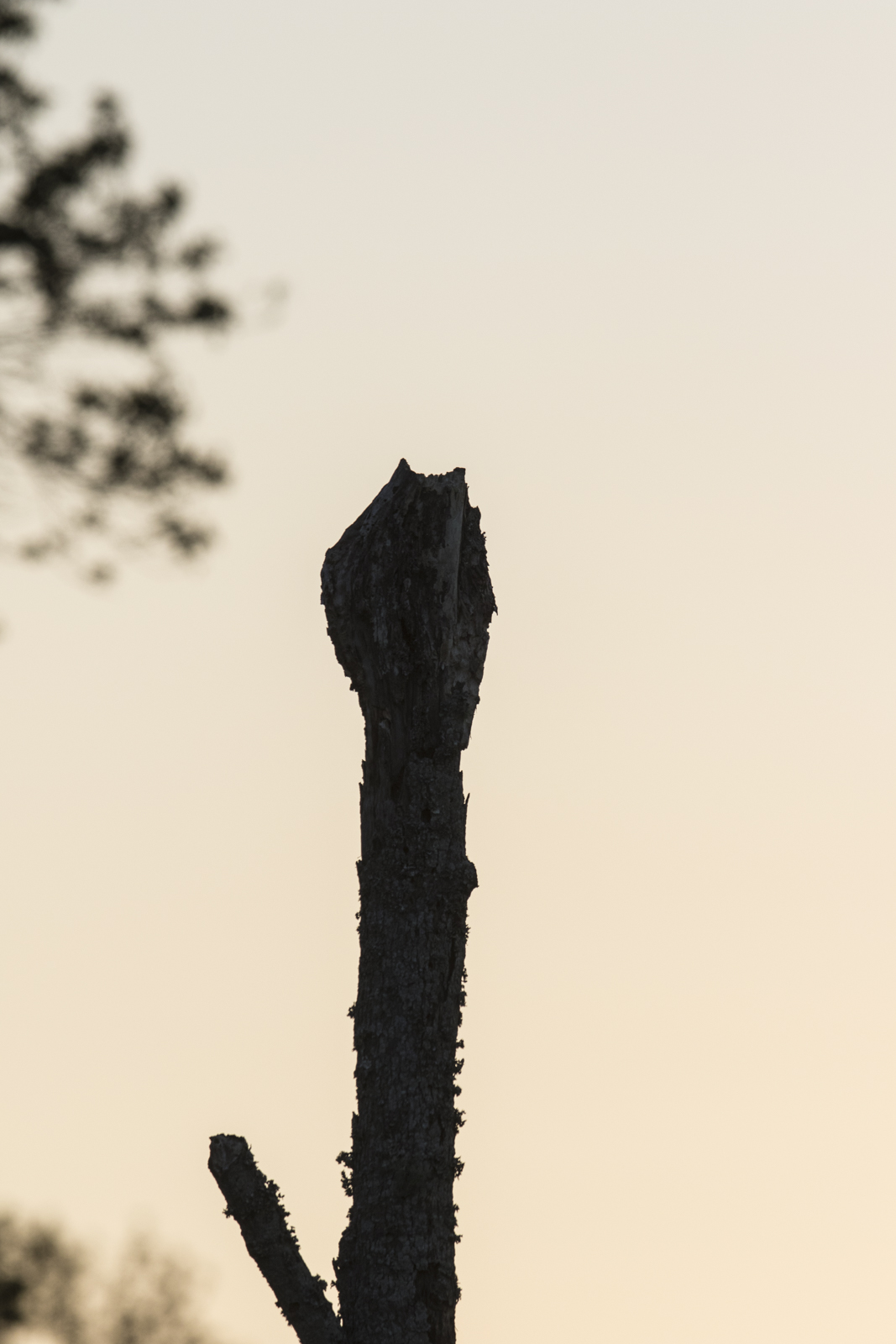
Owl or not?
As we pulled away, the sun was setting, and I saw what looked like another owl on top of a snag across the canal. But, it was just a very owl-shaped broken top to a dead tree. Still, a perfect way to end a day with the owls.
